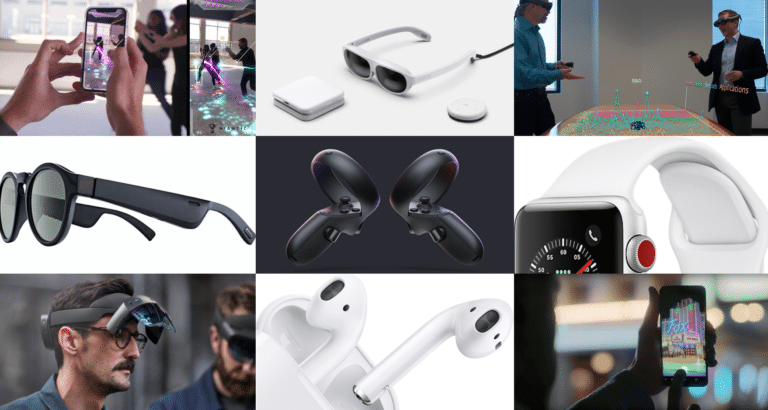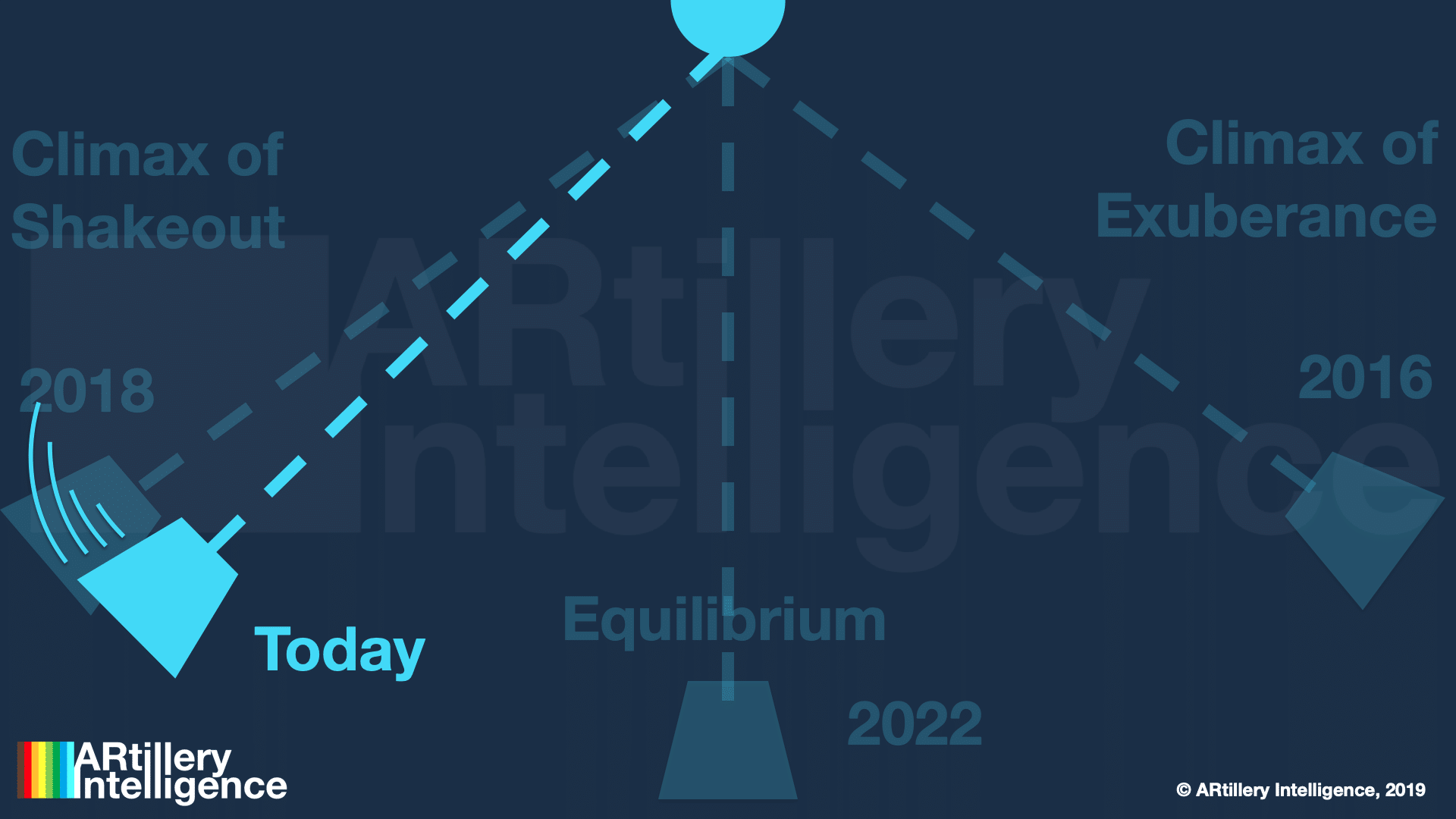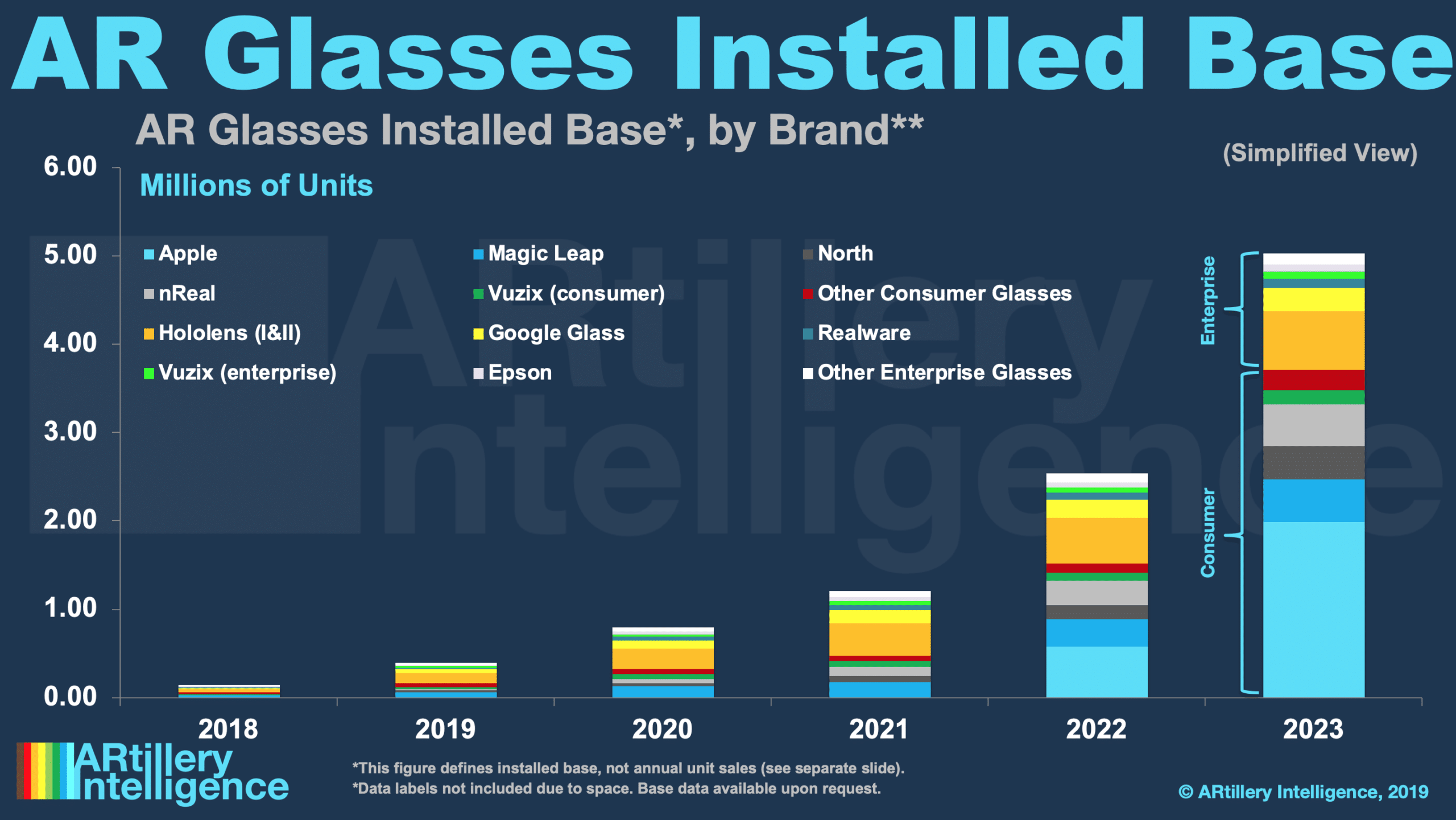
This post is adapted from ARtillery Intelligence’s report, Spatial Computing: 2019 Lessons, 2020 Outlook. It includes some of its data and takeaways. More can be previewed here and subscribe for the full report.
They say that patience is a virtue. This applies to the current state of the spatial computing industry. After passing through the boom and bust cycle of 2016 and 2017, the last two years were more about measured optimism in the face of industry shakeout and retraction.
At the precipice of 2020, that leaves the question of where we are now? Optimism is still present but AR and VR players continue to be tested as high-flying prospects like ODG, Meta and Daqri dissolve. These events are resetting expectations on the timing and scale of revenue outcomes.
But there are also confidence signals. 2019 was more of a “table-setting” year for our spatial future and there’s momentum building. Brand spending on sponsored mobile AR lenses is a bright spot, as is Apple AR glasses rumors. And Oculus Quest is a beacon of hope on the VR side.
To synthesize where we are and where we’re going, our research arm ARtillery Intelligence has published its annual year-end recap and year-forward outlook. The latter includes five concrete predictions. As a sneak peek, they’re listed below, followed by a drill down on the first prediction.
1. Apple Glasses Don’t Arrive in 2020
2. AR Wins With “Training Wheels”
3. Advertising Keeps the AR Revenue Crown
4. Industrial AR’s Inflection is Still One Year Away
5. VR Has an Evolutionary (not revolutionary) 2020

Prediction 1. Apple AR Glasses Arrive Fashionably Late
A longstanding rumor in the AR industry has pegged 2020 as the year that Apple will launch AR glasses. We believe that won’t happen. Our reasons go back to the state of the underlying technology, which isn’t yet there for mass-market consumer-viable AR glasses.
That factor is amplified by Apple’s standard playbook which is to launch late then outperform earlier entrants with superior design, mainstream appeal, marketing and supply-chain economies of scale. That’s historically validated by Mp3 players, smartphones, tablets, etc.
Combining these two factors, the technology isn’t yet at the stage where it’s possible for Apple to release something that is up to its standards of product style, mass-market viability and industrial design. We’ve been firm in this stance since rumors of a 2020 launch first bubbled up in 2017.
More importantly, looking forward, we believe Apple will spend 2020 in behind-the-scenes work on AR glasses as it works towards a 2022 release. Expect more technology acquisitions and acquihires as Apple assembles its capabilities to achieve market-leading AR glasses.
The glasses themselves will likely start a stationary-use entertainment wearable versus an all-day world-immersive play. The latter will be something Apple works towards as underlying technologies enable it. Think of it like the iPhone 1, followed by years of evolutionary steps.
Halo Effect
The eventual target will be an all-day wearable that utilizes Apple’s recently-patented variable-opacity lenses, for multimodal use. That includes lean back entertainment when glasses are opaque/occluded; and utility-driven content (iOS notifications, etc.) when in transparent mode.
This theory aligns with the latest rumor that 2022 will see an AR/VR hybrid headset, followed in 2023 by a more streamlined set of AR glasses for all-day use. Rather than typical supply-chain indicators, this comes from an internal announcement to more than 1,000 Apple employees.
For all of the above, Apple’s standard hardware cycle should be considered. So a 2022 release could be announced in Fall 2021. Importantly, these glasses will carry Apple’s signature “halo effect” on the entire category, thus rising all boats and even boosting sales of competing glasses.
To wrap some numbers around that, we project Apple to sell less than one million AR glasses in 2022 but exceed one million by 2023 (see above). This will drive aggregate AR glasses sales of almost 3 million by 2023, correlating to an installed base of 5 million units.
Of course all of the above is speculative and based on market signals we’re tracking closely. It will be a moving target, and we’ll course correct as market factors unfold. We’ll also hold ourselves to task in 2020 for all predictions. Stay tuned for more and see the full report here.
For deeper XR data and intelligence, join ARtillery PRO and subscribe to the free AR Insider Weekly newsletter.
Disclosure: AR Insider has no financial stake in the companies mentioned in this post, nor received payment for its production. Disclosure and ethics policy can be seen here.


